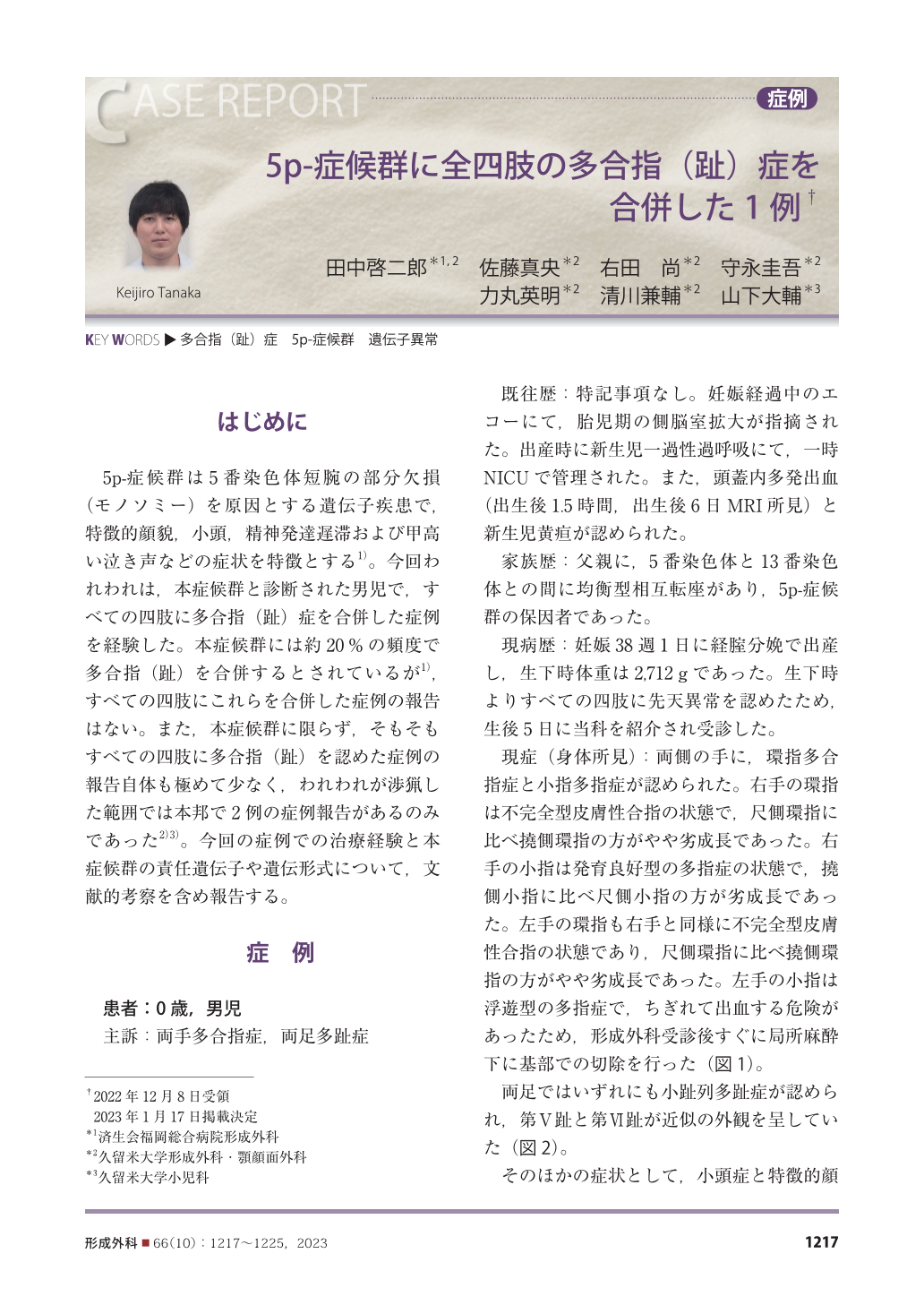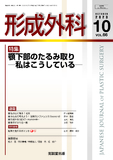Japanese
English
- 有料閲覧
- Abstract 文献概要
- 1ページ目 Look Inside
- 参考文献 Reference
はじめに
5p-症候群は5番染色体短腕の部分欠損(モノソミー)を原因とする遺伝子疾患で,特徴的顔貌,小頭,精神発達遅滞および甲高い泣き声などの症状を特徴とする 1)。今回われわれは,本症候群と診断された男児で,すべての四肢に多合指(趾)症を合併した症例を経験した。本症候群には約20 %の頻度で多合指(趾)を合併するとされているが 1),すべての四肢にこれらを合併した症例の報告はない。また,本症候群に限らず,そもそもすべての四肢に多合指(趾)を認めた症例の報告自体も極めて少なく,われわれが渉猟した範囲では本邦で2例の症例報告があるのみであった 2)3)。今回の症例での治療経験と本症候群の責任遺伝子や遺伝形式について,文献的考察を含め報告する。
5p-syndrome is a genetic disorder caused by a partial deletion of the short arm of chromosome 5. Individuals with 5p-syndrome are characterized by distinctive facial features, a small head, mental retardation, and the use of high-pitched squeals. We describe the case details of a 0-year-old Japanese boy diagnosed with 5p-syndrome who had polydactyly in all four limbs. He had polydactyly of the ring finger and the little toes on both hands, plus six toes on each foot. At the age of 1 years, he underwent surgery in two phases, with satisfactory results in both morphology and function. This is an extremely rare case of ring polydactyly and little polydactyly on both hands and rows of small toes on both feet. Genetic testing revealed a partial deletion of the short arm of chromosome 5 and partial trisomy of chromosome 13 (46,XY,der (5) t (5;13) (p15.2;q31) pat). This trisomy can cause polydactyly of the little finger, as this region contains GPC (glypican) 5 and GPC (glypican) 6, which have been identified as responsible genes. Our patientʼs case also showed polydactyly of the little toes, and it is highly probable that the region of chromosome 13 displaying partial trisomy carries the gene responsible for this congenital abnormality of the extremities.

Copyright© 2023 KOKUSEIDO CO., LTD. All Rights Reserved.


